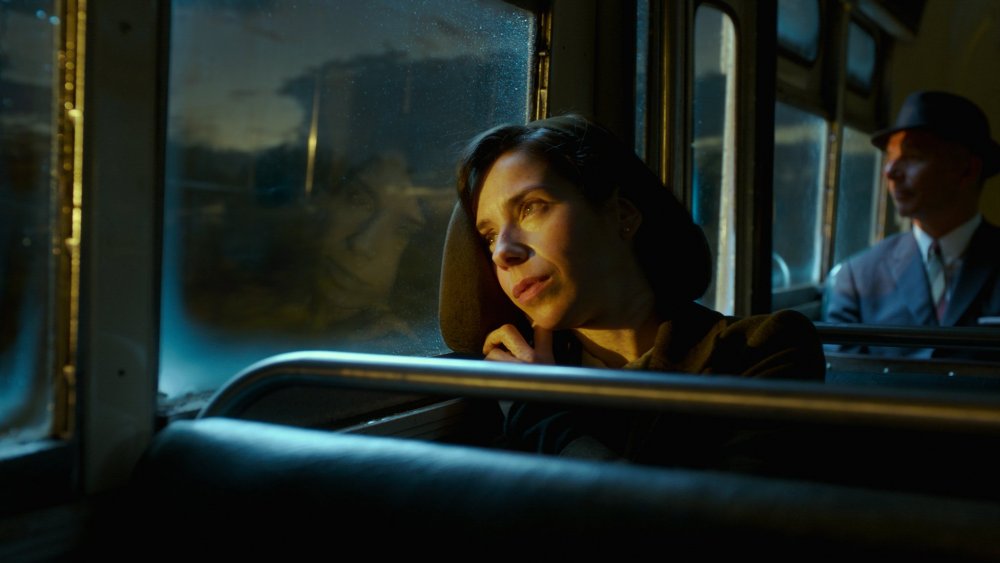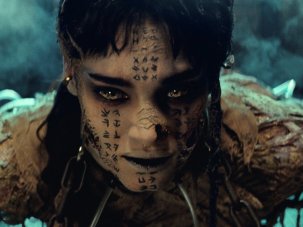The Hollywood rumour mill has it that Universal Pictures considered hiring Guillermo del Toro to oversee its ‘Dark Universe’ – the project of exploiting the studio’s monster-movie IP as a Marvel-style shared universe, which now seems to be on hold after the successive false starts of The Wolfman (2010), Dracula Untold (2014) and The Mummy (2017).
USA 2017
Certificate 15 123m 10s
Director Guillermo del Toro
Cast
Strickland Michael Shannon
The Asset Doug Jones
Hoffstetler Michael Stuhlbarg
Eliza Esposito Sally Hawkins
Zelda Octavia Spencer
Giles Richard Jenkins
Elaine Lauren Lee Smith
Fleming David Hewlett
Hoyt Nick Searcy
[1.85:1]
UK release date 16 February 2018
Distributor Twentieth Century Fox
theshapeofwater.co.uk
► Trailer
That deal didn’t come together, but del Toro – free of the oversight that might have turned that dream gig into a nightmare – has now made what amounts to a reboot of Universal’s last great addition to the pantheon of famous monsters, Creature from the Black Lagoon. In The Shape of Water, the amphibian humanoid played sinuously by Doug Jones (who was the similarly aquatic if more articulate Abe Sapien in del Toro’s Hellboy movies) has been hauled in chains from “the mud of the Amazon”, just like the Gill Man in Jack Arnold’s 1954 film. The Shape of Water also riffs on Arnold’s lesser-known follow-up, Revenge of the Creature (1955), as well as Jack Sherwood’s unusually plotted The Creature Walks Among Us (1956), in which the savage monster becomes more sympathetic when abused by inhuman scientists following its capture. Del Toro even carries over a confusion, originating in Revenge of the Creature, as to whether the Gill Man is a freshwater fish or a marine animal.
With a monster whose name and face are familiar to focus groups, Creature from the Black Lagoon has been in remake development hell for decades. Whatever Universal might want or expect from its Creature, it is highly unlikely it would have greenlit the version that del Toro – working for Fox Searchlight – goes for here. Evoking Stephen Frears’s underrated 1996 film of Valerie Martin’s Mary Reilly, which looked at the story of Dr Jekyll and Mr Hyde from the viewpoint of Dr Jekyll’s maid, this tells the tale of the fish man, who might be a god or a monster, from the viewpoint of Elisa, a cleaning lady at the top-secret institute where he is being studied. (He is definitely not an ‘it’, we are assured in a sign-language set piece that clears up longstanding questions about the Creature’s smooth crotch.)
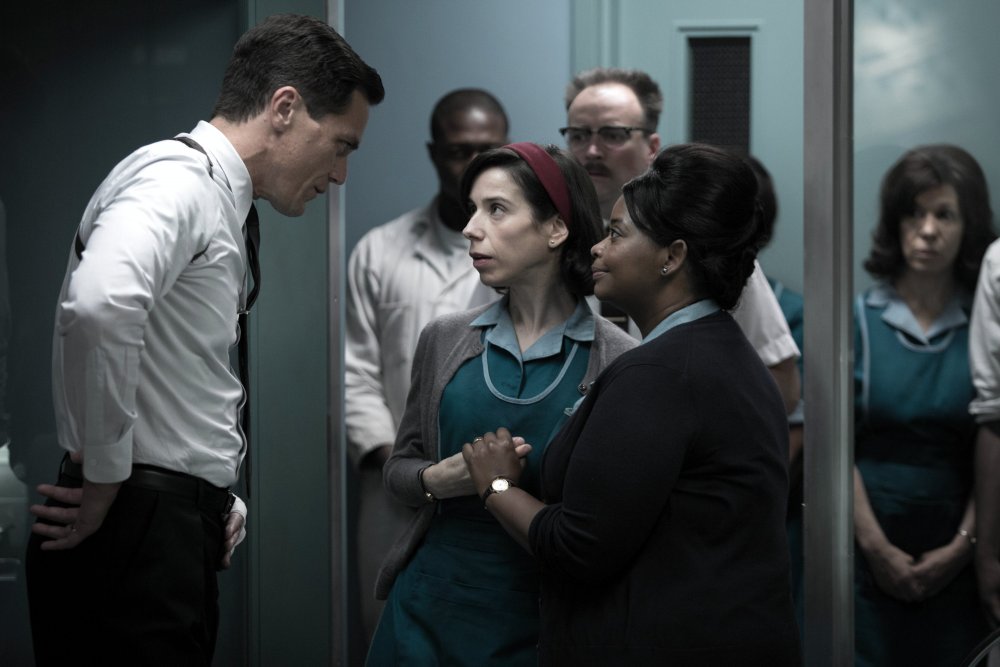
Michael Shannon as Strickland with Hawkins and Octavia Spencer as Zelda
It’s typical of del Toro’s witty casting that he signed up Sally Hawkins, still best known for playing a woman incapable of shutting up in Mike Leigh’s Happy-Go-Lucky (2008), as the wistful mute Elisa. Experienced with monsters in recent Godzilla films and adorable non-human refugees in the Paddington movies, Hawkins mimes impressively, evoking Jane Wyman’s Oscar lock-in performance as a mute abuse victim in Johnny Belinda (1948). With neck scars (obviously incipient gills) to suggest that Elisa’s orphan character is a stranded mermaid, the film bluntly depicts an association between sex and water (she masturbates every morning in her bath) that resonates throughout the strange romance. The film could have been pitched as a mash-up called ‘Johnny Belinda Meets the Creature’.
As in Pan’s Labyrinth (2006), del Toro’s real monster is a glowering human – an introductory quote setting up the opposition between creature and baddie is a rephrasing of Rod Serling’s narration for Brian De Palma’s Phantom of the Paradise (1974) – and Michael Shannon’s sinister security agent Strickland is a seething enemy to all humane values. The fascist of Pan’s Labyrinth suffered a wince-inducing mouth injury, paid back here when Strickland drags a wounded man across the floor by hooking a finger through a bullet hole in his cheek. This time, the villain’s corruption is epitomised by the bitten-off-and-reattached-but-rotting fingers he finally wrenches off and throws away.
Strickland is a del Toro type, established as far back as Ron Perlman’s Yankee exploiter in Cronos (1993), but Richard Denning and Jeff Morrow played similar characters in the original Creature movies. Associated with the razor-finned curves of his classic car – a design as sinuous and lethal as the Creature itself – Strickland is so purely dark-hearted that he confirms The Shape of Water as a romantic fable.
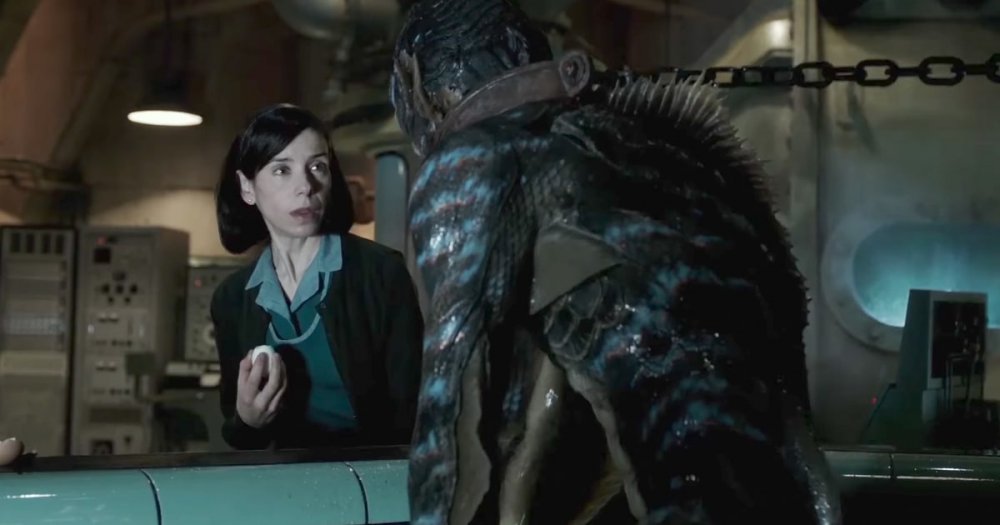
Hawkins with Doug Jones as The Asset
A sign that the Creature had achieved pop-culture status was a key moment in The Seven Year Itch (1955) when Marilyn Monroe sympathised with the monster’s yearning for swimsuited heroine Julia Adams. Here, del Toro approaches his monster through unexpected genres. Elisa lives above a movie house that screens biblical epics; her gay neighbour shares a stereotypical interest in Hollywood musicals, prompting a black-and-white fantasy in which she finds her voice. Singing You’ll Never Know for her shimmering partner (Jones was originally a dancer), she channels Alice Faye in Hello Frisco, Hello (1943) and also references Alice Doesn’t Live Here Anymore (1974), where the desires of Ellen Burstyn’s Alice are signified by exactly the same song and performance.
This is a film made by a boy who loves monsters, who has grown up to understand what they might represent to an adult woman, other outsiders (a gay man, a communist sleeper, a black woman) and an unforgiving society. When this creature violates a key movie taboo – in romcoms, nothing bad is ever going to happen to a gay man’s cat – the grieving Giles (Richard Jenkins) understands that he can’t blame “a wild animal”, and del Toro stresses as he always has done that the magical must also be frightening, and that love and horror are transcendent and entwined in the DNA spiral of cinema.
In the March 2018 issue of Sight & Sound
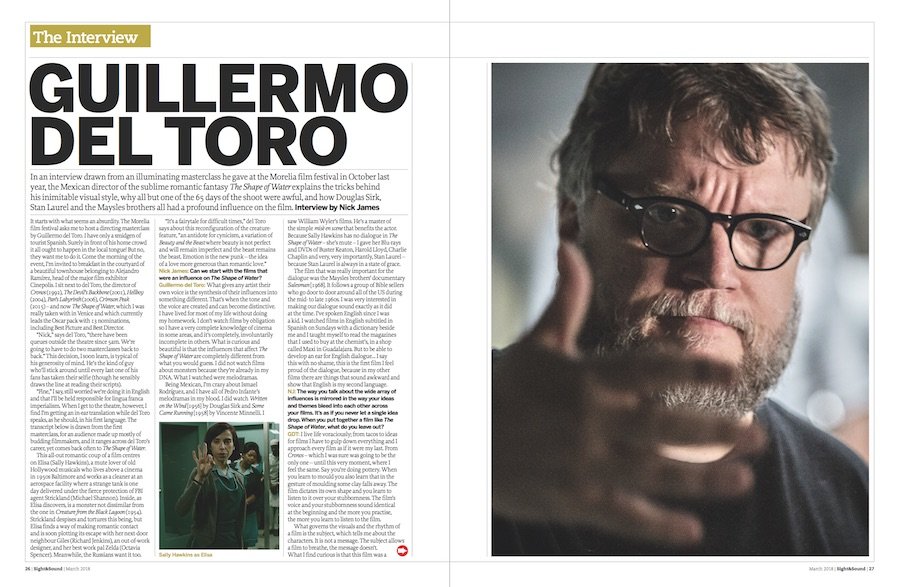
The Interview: Guillermo del Toro
In an interview drawn from an illuminating masterclass he gave at the Morelia film festival in October last year, the Mexican director of the sublime romantic fantasy The Shape of Water explains the tricks behind his inimitable visual style, why all but one of the 65 days of the shoot were awful, and how Douglas Sirk, Stan Laurel and the Maysles brothers all had a profound influence on the film. Interview by Nick James.
-
Sight & Sound: the March 2018 issue

Greta Gerwig on Lady Bird, plus girl friends in the movies, The Shape of Water, Loveless, The Touch, A Fantastic Woman, Dark River and our...
-
The Digital Edition and Archive quick link
Log in here to your digital edition and archive subscription, take a look at the packages on offer and buy a subscription.




